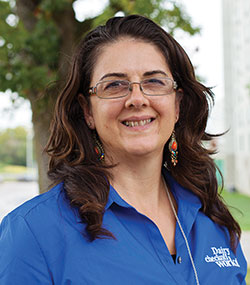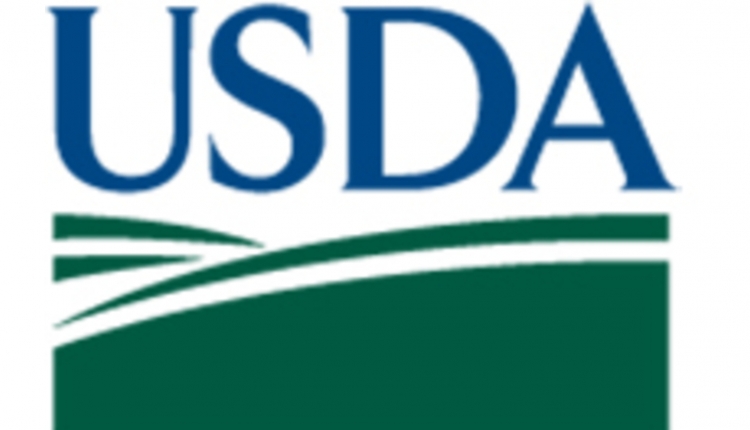
You will never see me climb up the side of a silo or shimmy up a ladder to the barn roof. I like both feet on solid, unwavering ground.
I was not always so scared. I have memories of helping my father stack hay in the far tip of the hayloft without any issues. But something happened in my 30s, and I developed a phobia of heights.
The first negative experience I remember is a number of years ago when Duane and I attended a cow sale near Toronto. We stayed near the CN Tower, which at the time was one of the tallest buildings in the world. Duane persisted that we visit the top, and I reluctantly gave into pressure so we took a ride to the top level.
As we stepped off of the elevator, I unknowingly stepped right onto a thick panel of Plexiglas on the floor. Duane just couldn’t help himself and told me to look down.
I am certain my heart stopped, as I looked the entire way down to the spinning specs of people and the flea-sized cars. I leaned my head against the inside wall and clung to the side until it was time to go down.
Not all high places bother me. I am fine when it includes nature, like standing on top of a mountain. For some reason, looking out over a cascade of mountaintops soothes my soul more than it shakes my knees.
This winter, we decided to bring our scattered children together in one central location for some much- needed family time. With children living in Pennsylvania, California, and Montana, we settled on the Grand Canyon as the most reasonably priced and adequately adventurous location.
This was my second visit to the magnificent wonder of the world. When I was in eighth grade, my family took four weeks off from milking cows and traveled to the West Coast. By the time we reached the Grand Canyon, I just wanted to go home and was not impressed with the “giant hole in the ground.”
This time, I was much more appreciative of our Creator and His creation. Wow. Words or pictures cannot describe the beautiful, picturesque terrain. It was also a special vacation with our year-old grandson tagging along.
As we drove around the rim and took in numerous angles of the canyon, I often thought of what it may have been like to be a settler or an American Indian; riding across miles of prairie and coming upon the amazing scenery for the first time. I can only imagine how happy they must have been to have a horse that stopped before reaching the edge.
There certainly isn’t an overabundance of guardrails, ledges, or walls, which is a good thing for people who don’t like their view obstructed but not a good thing if you like feeling secure.
About halfway through the day, Duane looked over and said, “You’re really handling this well.” I wasn’t dangling over the edge by any means, but I was bravely standing with the family.
The day was spectacular, and even though there were times when the skies were overcast, there were also times that the sun broke through and brought hues out of the rocks that were breathtaking, unimaginable, and made me want to take one step closer for a better view.
We recently heard a speaker who told us, “The best view of the Grand Canyon is when you are standing with your feet on the edge.” As a mother, I wanted to remind him that there are not adequate guardrails around the canyon to stand on the edge; it is not safe. However, since we just got back from seeing the magnificent view firsthand, I completely understand the word picture he wanted to convey. We will not see the full view if we are not willing to take risks.
Challenges are often put before us. We must step outside our comfort zone and plot our own course. Risk is a tool we need to use on our farms.
These are not new calls to action. However, I couldn’t help but to compare his thought with last year’s actuality and how that affected our view.
Just like the day we were at the Grand Canyon, we had times that the clouds of reality rolled in, eclipsed our visibility, and we had to make sure we knew where the edge was for our farm. It was not the easiest year to endure, and for some farmers there was more focus on survival than on taking risks and expanding a view.
A staple in the dairy industry is that no two farms are alike. We are individualists, and each of us has a different view for our business. For some of us, the view includes on farm processing. For others, the view is breeding and raising a beautiful show cow. For some, it includes an agritourism business. And for others it is cows and only cows.
The challenge is to find the balance that takes each of our unique farming types to their potential. When we find that balance, we are soaking in the awesome view at the canyon’s edge, yet at the same time remembering to keep both feet firmly planted on the ground.
Common Threads is a regular column in Hoard's Dairyman. The author and her husband, Duane, own and operate a 550-cow dairy in Cochranville, Pa.










